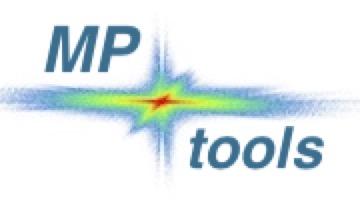The MP_PDF tool calculates the total and partial pair distribution functions (PDF) by direct real-space sampling and binning of atom distances between pairs of unit cells in the simulation box. The present version employs solely the Monte-Carlo pseudo-random sampling using the new RANDOM_NUMBER intrinsic generator of GFORTRAN.
On input only binary data imported by the CELL method are eligible. The BULK input method does not relate atom positions to their unit cells and does not index them in a systematic order, as a consequence it is not possible to find pairs of atoms in a deterministic way (without searching the whole box).
The behaviour of MP_PDF can be adjusted by setting the &MP_PDF namelist parameter values in the .PAR file. Uniform (unit) or neutron weights can be choosen for the PDF presentation. The resulting PDF distributions can be smoothed/broadened to emulate the resolution broadening of experimental data. These options are to be specified in the &MP_PDF section of the .PAR file together with the PDF step and range and with the partial correlation atom pairs
&MP_PDF
N_PDF = 1024 ! dimension of the PDF array (2**N best for FFT)
PDF_STEP = .02 ! PDF step [Å] useful choice: n_pdf=1024, pdf_step=.02
J_ACC = 2 ! accumulation algorithm: 2 Monte Carlo sampling
N_H = 20 ! x10^6 MC sampling events (optimum ≥20)
J_SMOOTH = 1 ! smoothing the PDF: 1 none (2-8 useful, 0 interactive mode)
N_CORR = 1 ! number of partial correlation pairs to be accumulated
The number of Monte-Carlo events to be generated is specified in units of 106 cell pairs. Ten or a few tens are sufficient for most purposes. Hence a medium sized supercell (> 104 atoms) provides enough data to generate a usable PDF set. In case of fractional occupancies the supercell size may prove too small. For such cases the input dialogue permits to define partial sampling of a larger number of snapshots (supercells).
Together with the total PDF also the output of up to four partial PDFs, corresponding to atom pairs indicated in the .PAR file in PDF_PAIRS list, can be requested for display on a single page. The optional output files in the .PS (graphics) and .TXT (PDF tables) formats can be requested in the dialogue.
